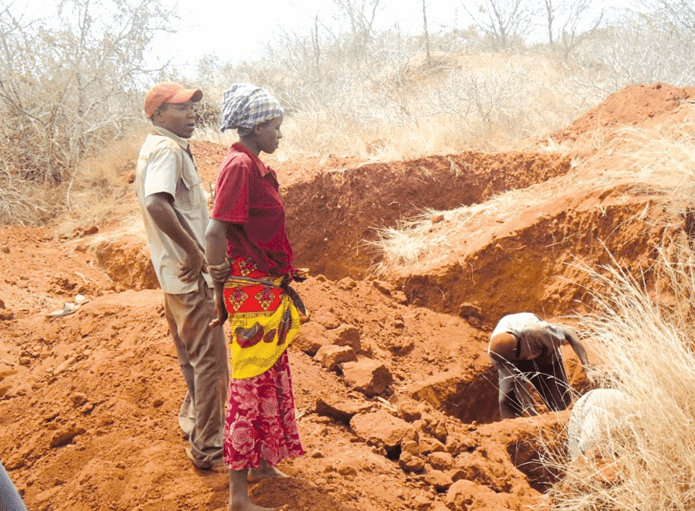Official artisanal teams set to improve mining hopes
By Reuben.Mwambingu, June 25, 2024In the far-flung village of Aliya, nestled within the remote stretches of Mwatate constituency in Taita Taveta County, a hidden world of untapped riches glimmers beneath the soil.
Among the modest homesteads, men and women known locally as mazurura embrace the dawn with hope and determination, venturing into the local mines where rubies and green garnets—the area’s most bountiful treasures—await discovery.
Aliya, along with its neighbouring villages of Mwachabo, Kamtonga, Kishushe, Kasighau, Chunga Unga, and Mkuki form a veritable treasure trove.
The earth yields a dazzling array of minerals: Tsavorite, blue sapphire, change colour garnet, and more. Yet, for years, the land’s bounty has slipped through the fingers of its people, flowing to distant shores like Thailand and Hong Kong in its raw, unrefined form.
Despite the riches beneath their feet, the miners’ lives remain shrouded in poverty and despair.
Unscrupulous middlemen
For the artisanal miners or mazururas, it has been a tough journey, conducted in hiding as they were considered illegal. In the end, they could only transact business via unscrupulous middlemen or brokers who end up duping them.
Annarita Marura, a 45-year-old mother of three, has toiled as an artisanal miner or mazurura for years. She recalls her bitter experience. “We extract gemstones worth millions, only to sell them for a pittance to brokers in Mwatate. Once, I sold a gemstone for Sh20,000, only to learn later that it fetched Sh6 million from a foreign dealer. That day, I held a fortune in my hands, unaware. It’s a memory that haunts me.”
Marura’s tale is one of many. On an ordinary day, she unearthed a few green garnet crystals, which she sold for Sh20,000. Unbeknownst to her, these gems held immense value, a truth she discovered too late. “I wish I had known,” she laments, her words heavy with regret.
But this narrative could soon shift following the recent move by the government to decriminalize artisanal mining.
Mining Act
Gemstone mining in Kenya operates at three levels: artisanal, small-scale, and large-scale mining. Artisanal miners were only recently recognized as a legal category in the Mining Act of 2016. Currently, there are only two large-scale gemstone mines in the county and about 162 small-scale mines covering a total area of 72.6491 square kilometers. The number of artisanal miners is largely unknown, though it is believed to be much higher than that of small-scale mines.
On October 3, 2023, the cabinet decriminalized artisanal mining, paving the way for formalizing these miners into marketing cooperatives.
Mining Principal Secretary Elijah Mwangi estimates that Kenya has over a million artisanal miners excavating various minerals, ranging from industrial and construction materials to precious stones.
During the launch of the artisanal mining committees for Kilifi and Kwale counties at Bandari Maritime Academy in Mombasa, he noted that it is now a requirement for every county to have its own artisanal mining committee.
“Right now, we have 28 of these committees already gazetted. Our expectation is that once they start sitting, they should be able to issue artisanal mining permits to marketing cooperatives that have been formalized and registered in the county,” he stated. “The exercise is intended to facilitate and build the capacity of artisanal miners so that their businesses can be supported by the government.”
“Now there should be no reason why anybody should operate mining without a valid license. My call to those practising mining is that they should come to the ministry and collect their licenses… please follow up if your application has been rejected and submit the documents that have been asked,” he said.
